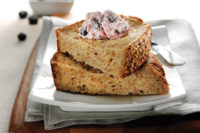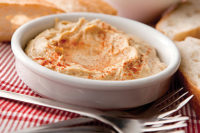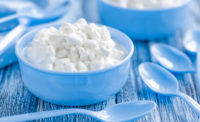Not for nothing, but those of us in the dairy business know a thing or two about functional foods. After all, if Mother Nature herself could have formulated the prototypical functional food …Well, she did formulate the prototypical functional food, and she called it “milk.”
But even Mother Nature would engage in a little extra credit if she had the job to do all over again. For as inherently healthful as milk and dairy foods are — rich in protein, minerals, good-for-you fats and naturally occurring bioactives — today’s competitive market demands that any food, even dairy, go beyond basic nutrition to be truly functional. That’s why it’s encouraging to learn that suppliers are developing functional ingredients with dairy applications in mind.
“Functional foods and beverages are a growing segment of the market,” said Alison Raban, a food technologist at BI Nutraceuticals in Long Beach, Calif. “That gives ingredient suppliers opportunities to introduce new ingredients — or to reintroduce well-known but overlooked ones — to a growing marketplace.”
On the eve of the IFT annual meeting and food expo (June 25 to 28 in Las Vegas), now is the time to chew on some functional food for thought and taste what’s on the good-for-you ingredient menu.
’Tis the season
Functional ingredient suppliers often treat the summer tradeshows like the holiday season, filling their booths with surprises they hope will dazzle. This year is no exception. Laura Troha said that she and her colleagues anticipate having a major presence at IFT this year, promoting everything from conjugated linoleic acid (CLA) and omega-3s to vitamin D and carotenoids, like lutein and lycopene. Troha is the Tonalin CLA product manager, human nutrition, at ingredient supplier BASF Corp., Florham Park, N.J.
Raban is also excited about the wares her company will offer, including high-fiber psyllium, quinoa for protein, whole-grain and gluten-free ingredients and products both familiar and unexpected. For example, while Raban notes that chia seeds are “mostly known in the U.S. for their use in Chia Pets, they’ve become a healthy, natural ingredient that formulators and manufacturers are incorporating into a number of different applications.”
She considers chia as well as quinoa a “great ingredient for adding whole-food functionality. Since both are also somewhat uncommon in the typical U.S. diet, they offer uniqueness and excitement to products that aren’t only healthy but interesting.”
Baobab has a similar effect. Raban said not only is it high in many nutrients (like vitamin C), but also “its unique back story can entice consumers, as well.”
And consumers are enticed, for very sensible reasons. As Peggy Steele observes, “Interest in functional foods is driven by several major factors in the U.S., including the ever-growing body of research that links diet with health, growing waistlines, the aging population and the rising cost of healthcare.” Steele is the global business director of health and nutrition probiotics. Danisco Health & Nutrition, Danisco USA Inc., Madison, Wis.
No wonder consumers are leaning on diet to keep a lid on things. As Steele said, “Consumers want to stay well, thereby avoiding trips to the doctor and missed days of work and school. Women, often in their role as family caregiver, are particularly interested in keeping themselves and their families healthy.”
Food manufacturers would be wise to answer that interest with products that have functional benefits to meet this demand, Steele said.







